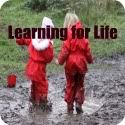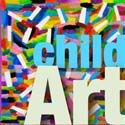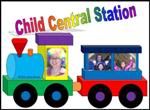Not long ago, one of my readers, Andrea, messaged me regarding the mini-playscapes that I create for the children at my preschool. I asked her if she minded me sharing our conversation with all of my readers as I felt it highlighted an issue that might be of concern to others. So here it is:
ANDREA
“Hi….just caught a glimpse of your room on here…. wanted to ask you a question. How do you keep display’s looking good? Do you get the children to re-set it up, do they not trash it? I feel like a frustrated educator at the moment. I am always buying things for displays and play stations etc, spent hundreds in op shops etc. only to have everything lost, trashed or taken home etc. I set up in the evening before I leave, or set up something during the day, only to have it all gone by end of the day. I’m pulling my hair out. Currently I have empty tables because I don’t feel like putting anything on them…..can you help me?
Ta Andrea.”
KAREN
“Hi Andrea,
I totally understand your concerns Andrea. I guess you have to gauge the children you have in your group. I certainly have had groups of children who have been destructive, breaking things for no apparent reason, and that is disheartening when you have gone to great effort to set something up. With a group like this, I tend to do less of the delicate displays and stick to things that are more robust. And of course work with them on their destructive tendencies. There has to be a reason behind it. This year I am fortunate to have a group of children who are very respectful of the environment and resources.
“Trashing” on the other hand is probably an adult way of viewing the children’s interactions with the environment. And certainly something we all can struggle with. I think when we set something up and it looks really pretty it can be a bit upsetting to see it all strewn about on the table and possibly floor! However, overtime I have learnt to become less ‘precious’ about my set ups. If the playscape looks trashed, essentially that means the children have been engaging with it. So try to replace the ‘trashed’ concept with the concept of ‘active engagement’. I encourage you to sit nearby and listen to the children’s interactions and you will be surprised by the wonderful story making and pretend play that is happening. If you just view the end result, what appears to be ‘trashing’, you will possibly become disheartened. At the end of each day, I reset the display. It is a lot of hard work when added to the rest of our responsibilities, but such great learning does take place. Rest assured of that.
I haven’t had the problem of things going missing so much, but I do question whether this can be an ‘age’ related thing. The 3 year old teacher at our preschool also uses these displays and we do find we have to collect pieces from all over the room after the 3 year old session. I think 4 year olds tend to drop what is in their hand before they move on, whereas 3 year olds tend to move on with the object still in their hand (Just a personal observation). Every now and then we do get what I call a ‘bower bird’, the child who likes to collect pretty things and take them back to their nest (home). Usually you can identify them and work on the problem with a little help from their parents!
I hope this is of some help Andrea, and keep up the good work!
Regards, Karen. 🙂
Following this conversation with Andrea, I did find myself pondering on the concept of children and “RESPECT”. How DO we ‘teach’ children about respect for their environment?
I understand that in order to respect others, children themselves must be shown respect and observe respectful practices modelled by staff in relation to their peers. And of course it is a gradual process. But how do we teach children to respect their environment, natural or man-made? This is a question that I would like to throw open to all readers for discussion. It is something that I am sure many of us have been disheartened by when we have found equipment and materials broken. Please feel free to offer your own thoughts and ideas in the comments section below. I look forward to everybody’s input! And I thank Andrea for initially raising the question! 🙂






















Hi Karen!
I think respect comes directly from agency and engagement. The more children feel they have agency in what’s set up and how it’s set up, the more they’re likely to be protective of it. After all, isn’t this exactly what Andrea is experiencing herself? She has put in all that time and effort- a part of herself is out there- and so she wants to protect it. Apply this to the children instead, and you are half way to getting this problem solved.
If you start with the engagement part of it- in other words, you watch what the children engage in, and thus discover their interests- you could perhaps then offer them the chance to choose what will be on display, and even let them arrange the display themselves.
Or make it a game; they choose resources, you organise the display; OR you choose the resources, they organise the display. This would be a wonderful small group activity.
I think what you say about not getting too precious and recognising that ‘trashing’ can often be relabelled as ‘engagement’ is spot on, BTW. Mess is inevitable. And some groups are definitely more difficult in this respect than others!! Know your demographic, and use it as a guide to the type and number of items that are displayed at any one time.
Thanks Candy. I totally agree with you about children having a sense of agency within the environment. Without doubt, fostering a sense of belonging, ownership and agency is essential in promoting positive attitudes and behaviours toward the learning environment. Thank you for your intelligent response! 🙂
Your playscapes are inspirational ~ the children must have such fun with them!!
Thank you Kelly, they do!
I agree about the 3 year-olds!
I teacher 3 x groups of 22 and they are definitely different then the 4 year-olds. They always move things around the room and like to empty, tip, fill and carry things everywhere. Instead of trying to change that I try and offer these opportunities around the room in various areas – and I have a couple of spaces where we talk about things ‘belonging’ to that space. We do find broken things and we have group discussions about looking after equipment, helping to pack and up and put things back and making it look nice for the next person. That’s why they are so good at looking after everything when they go to the 4 year-old group! It can be frustrating, but think about what you are offering and if this is appropriate for the group, the time of year etc.